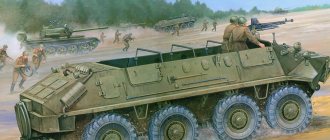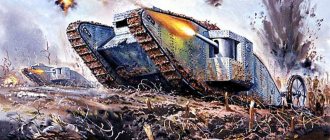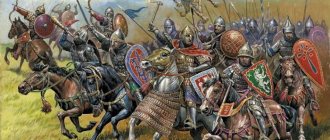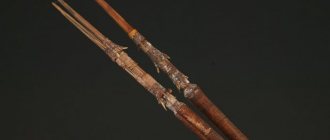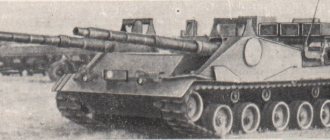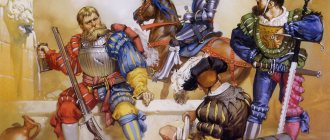In the popular imagination, a Viking is a blond brute, a dashing fighter. This image has a real basis, but not all Vikings corresponded to it. What were these amazing people really like? Let's trace the entire evolution of the Vikings using the example of twenty legendary warriors.
Historians trace the beginning of the “Viking Age” to June 8, 793, when a detachment of sea robbers (presumably Norwegians) landed on the British island of Lindisfarne, robbing the monastery of St. Cuthbert. This is the first Viking attack clearly recorded in written sources.
The Viking Age can be divided into three periods. The early period (793–891) is the most romantic, when risky residents of Denmark, Norway and Sweden put together “free squads” to raid more prosperous lands. Some managed to make geographical discoveries - for example, the Norwegian Vikings founded several settlements in Iceland. The first large-scale Viking campaign in Western Europe occurred in the early period - an attempt by the “great pagan army” to conquer England. The period ends with a temporary attenuation of the external expansion of the Normans (“northern people” - as the Scandinavians were called by the Europeans), when the Vikings suffered several military defeats: the largest happened in 891 at Leuven, where they were defeated by the East Franks.
Ragnar "Leather Pants" Lothbrok
Ragnar Lothbrok played by Travis Fimmel (TV series "Vikings")
Legend : Son of the Swedish king Sigurd Ring and brother of the Danish king Gudfred. The nickname stems from the fact that Ragnar wore leather pants made by his wife Lagertha, considering them lucky. From a young age, Ragnar took part in many campaigns, gaining the authority of the great “sea king”. In 845 he assembled a huge squad for a raid on Western France. On March 28, Paris was captured, and the Frankish king Charles the Bald, in order to protect the capital from destruction, paid a ransom of seven thousand silver livres. In 865, Ragnar set off to plunder England. But the flotilla was scattered by a storm, and the king's ship ran aground. Ragnar was captured and taken to the court of King Aella of Northumbria, who ordered the Norman leader to be thrown into a pit with poisonous snakes.
Dying, Ragnar exclaimed: “How my dear piglets would grunt if they knew what it’s like for me, the old boar!”, hinting at the revenge of his sons. And they did not disappoint - they gathered a huge army, known as the “great pagan army,” and in 867 they attacked Britain. They captured and brutally executed King Aella, plundered Northumbria, Mercia and East Anglia. Only the King of Wessex, Alfred the Great, was able to stop the expansion of the “great army,” partly by sword and partly by diplomacy.
Ragnar Lothbrok wooing his third wife Aslaug (painting by August Maelström, 1880)
History : The existence of Ragnar is not fully confirmed; we know about him mainly from the Scandinavian sagas. As for the written chronicles of Western Europeans, which tell about events related to the possible deeds of Ragnar, they either do not mention his name, or were generally created in much later times.
Epitaph : Classic Viking adventurer. A man of noble origin, he achieved everything himself - thanks to military skills and personal courage. Having obtained enormous wealth during his campaigns, Ragnar built his own kingdom, taking control of part of the Danish and Swedish lands. However, he remained a robber at heart. Otherwise, it is difficult to explain his last adventure, when he, already at an advanced age, went to “fool around” in Northumbria.
Bjorn Ironside
Legend : Son of Ragnar Lothbrok, king of Sweden, founder of the Munsø dynasty (named after the hill where he is buried). The nickname is associated with the captured metal armor that Bjorn wore in battle. He became famous for his campaigns in the southern lands: in 860 he ravaged the Mediterranean coast of Morocco, plundered Provence, Spain and Italy. But in a clash with the Saracen squadron he failed - using “Greek fire” unknown to the Vikings, the Moors burned forty ships. In 867, Bjorn was one of the commanders of the “great army”, but did not stay in England for long.
History : The main source is sagas. However, several Frankish chronicles mention a Viking leader named Berno.
Epitaph : A very sensible Viking. He wore metal armor - and it doesn’t matter that the Vikings didn’t do that. Faced with the “Greek fire” of the Moors, he did not destroy the fleet and retreated. He preferred “bird in hand” - dominion over Sweden - to “pie in the sky” (the conquest of England).
Sword of a warrior of the "great heathen army", found at Repton (formerly Mercia)
Ivar the Boneless
Legend : Son of Ragnar Lothbrok. Almost the only leader known as a berserker. There are two versions about the nickname: the first is associated with an illness (possibly impotence or bone disease), the second with the fighting skill of Ivar, dexterous and flexible, like a snake. He was one of the commanders of the “great army”, distinguished by his leadership talents and cruelty. Tortured and then killed King Aelle. In 870 he ordered the assassination of King Edmund of East Anglia. He died in 873, being the ruler of the Irish city of Dublin.
History : In addition to the sagas and Anglo-Saxon chronicles, he is mentioned in the Annals of Ireland, where the date of his death is indicated - moreover, from a “terrible illness”.
Epitaph : Viking maniac, inhumanly cruel barbarian. Western chroniclers portray him as a fan of the famous “bloody eagle” execution - although modern historians deny its existence.
Sigurd Snake-Eyes
Legend : Son of Ragnar Lothbrok. The nickname arose from the fact that Sigurd was born with a mark in his eye (a ring around the pupil), which evoked associations with Ouroboros, a mythological serpent that swallows its own tail. Ragnar's favorite, after the death of his father, he inherited a fair part of his lands. He was one of the leaders of the “great army”. He married Blaja, daughter of King Aella, the killer of Ragnar Lothbrok. It is difficult to say how voluntary the marriage was, because Blaya was captured after the death of her father. However, Sigurd was with her for many years, having fathered four legitimate children. After returning from Britain, he quarreled with King Ernulf and died in battle in 890.
History : Known only from sagas.
Epitaph : "Soft" version of the Viking. A dashing fighter, but he became famous as a zealous landowner and a good family man.
Capture of Paris by Ragnar Lothbrok (19th century painting)
Halfdan Ragnarsson
Legend : Son of Ragnar Lothbrok (possibly by a concubine). In 870 he became the sole commander of the "great army" and tried to conquer Wessex, but was unsuccessful. In 874 he captured the West English kingdom of Mercia. After this, the “great army” disintegrated, and Halfdan with half the troops went to Scotland, and then to Ireland, where he declared himself king of Dublin. Constantly organized new trips. During one of them, a revolt of the Vikings who remained there broke out in Ireland. In 877, Halfdan fought with the rebels at Strangford Lough, was defeated and died.
History : In addition to the sagas, it is mentioned in Anglo-Saxon and Irish chronicles.
Epitaph : An ambitious Viking with a thirst for great achievements. Perhaps his fierce desire to ascend is due precisely to his “illegal” origin (even his name means “half-Danish” - a hint that Halfdan’s mother was a foreigner, not from Scandinavia).
"Vikings": a collection of misconceptions
The Canadian-Irish series "Vikings", which is filmed for the History channel, is considered by many to be the standard of historicity.
Alas, this is not true. The authors attributed the deeds of other Vikings to the semi-legendary Ragnar Lothbrok, mixing together events of about two centuries. They distorted the ideas of modern historical science about the morals and customs of the Vikings. And although the weapons, clothing and architecture shown in the series more or less correspond to the era, they are also full of anachronisms. In general, in terms of “historicity,” the series is inferior even to the novels of Alexandre Dumas. So the most authentic films about the Vikings are still the Soviet-Norwegian film by Stanislav Rostotsky “And Trees Grow on the Stones...” and the cycle of films by the Icelandic director Hrabn Güdnlaugsson (“Flight of the Raven”, “Shadow of the Raven”, “The White Viking”).
In addition, you can read about Ragnar and especially about the campaign of his sons from Maria Semyonova (“Two Kings”) and Harry Harrison (“The Hammer and the Cross”). Many songs are dedicated to the Ragnarson family, especially metal ones - for example, on the Doomsword album “Let Battle Commence”:
Guthrum the Old
Legend : Danish Viking, participant in the campaign of the “great army”, during which he gained considerable fame, so that when the army split in 875, he led half of it. He successfully fought with Wessex, but after the defeat at Ethandun he chose to make peace and was baptized under the name Athelstan. In 880 he became king of East Anglia. He ruled until his death in 890, managing to transfer the throne to his son Eorik.
History : In addition to the sagas, it is repeatedly mentioned in the Anglo-Saxon chronicles; coins minted under it have also been preserved. The nickname "Old" was given to him by modern historians to distinguish him from another king of East Anglia, Guthrum, who reigned at the beginning of the 10th century.
Epitaph : A Viking of humble birth who managed to rise to the occasion thanks to his intelligence and military talents. As a result, he became king and passed on power by inheritance.
Real Viking ship in the Oslo Museum
Ubba Ragnarsson
Legend : Son of Ragnar Lothbrok. One of the leaders of the “great army”, participant in the assassination of King Edmund of East Anglia. He was a good fighter, but had no other talents. When the “great army” split, he remained under the command of Guthrum. In 878 he went to Somerset. After the landing, he was defeated at the Battle of Kinvinta, where he died.
History : Mentioned in the sagas, as well as in the Anglo-Saxon Chronicles.
Epitaph : A brave and cruel fighter “without a king in his head”, capable only of fighting.
Gutfried of Frisia
Legend : Danish jarl, participant in the campaign of the “great army”. Having obtained a lot of goods in England, he assembled a squad, with the help of which he captured Frisia (a province on the border with Denmark) in 880. In 882 he ravaged Maastricht, Liege, Cologne, Trier, Metz and Aachen. Emperor Charles III the Thick made peace with Gutfried, granted him the title of Duke of Frisia, after which the seasoned robber took a vassal oath and was baptized. However, Gutfried turned a blind eye to the raids of other Vikings. The emperor's patience ran out, and in 885 he accused Gutfried of treason, after which he was killed by a group of Frisian nobles.
History : Often mentioned in chronicles - so the person is historical.
Epitaph : Viking condottiere. He got rich from robberies, gathered a squad, seized lands, began to serve the emperor... And then he betrayed - or was accused of treason. And he was killed - the famous mercenary Albrecht Wallenstein ended up in exactly the same way.
Vikings on a campaign (painting by Nicholas Roerich “Overseas Guests”, 1901)
Hastein
Legend : Probably Danish. According to one version, he is the son of a small farmer, according to another, he is a relative of Ragnar Lothbrok. An experienced warrior, he was the mentor of Bjorn Ironside, with whom he plundered France, Spain, Italy and Morocco. Then, alone, he returned to France, where he became a mercenary for the Duke of Breton. In 866 he defeated the Franks at Brissart. In 890 he moved to Flanders. Two years later he led the Viking army, which again tried to conquer England. He plundered many English lands, but, deciding not to try his luck anymore, he returned to France, where he died a few years later.
History : There are many records of Hastein in the Frankish and Anglo-Saxon chronicles, so his reality is proven. True, there is a possibility that there were two people with that name. If Hastein, who fought with Alfred the Great, was the mentor of Bjorn Ironside, then during the English campaign he should have been over seventy (very old at that time). However, this is possible.
Epitaph : One of the greatest “sea kings” - he robbed for a long time and with impunity, filled his pockets and died in his bed.
Rorik of Jutland
Rorik of Jutland (painting by Willem Koekkoek, 1912)
Legend : Nephew (according to another version - brother) of the King of Jutland Harald Klak. From a young age he was a mercenary in the service of the Frankish king Lothair, who fought against his father and brothers. After the strife between the Franks subsided, Lothair decided to get rid of Rorik and threw him into prison. But he fled and in 850 captured Dorestad and Utrecht. Lothair was forced to make peace - on the condition that the formidable Dane would defend the northern lands of the Franks from other Vikings. Around 857–862, Rorik conquered the Vendian Slavs and also captured part of Lorraine. Died between 879 and 882.
History : Rorik of Jutland is mentioned several times in the Frankish annals. Since the 19th century, a number of historians have identified him with Rurik, the Varangian known from the Tale of Bygone Years, who founded the ancient Russian princely dynasty. After all, Rorik is the only famous Viking with a similar name who lived during the same period. In addition, in 863-870, the name of Rurik disappeared from the Frankish chronicles - at the same time, according to Russian chronicles, Rurik of Novgorod appeared. Among modern Russian historians, this version has both supporters and opponents.
Epitaph : The most successful Viking who served the Carolingians. Starting as a mercenary, he built his own state. In general, life was good - even if we do not take into account the hypothesis that he was the founder of the Rurikovich dynasty.
The middle period of the Viking Age (891–980) is associated with the formation of centralized states in Scandinavia. At that time, the Normans fought with each other - the more successful became kings, the defeated sought happiness in other lands. The end of the period is considered to be 980, when the Normans, having overcome internal unrest, resumed expansion, but in a more “state” format.
Harald Fairhair
Statue of Harald Fairhair in Oslo (sculptor Nils Aas)
Legend : Son of Halfdan the Black, king of the province of Vestfold. His youth was spent in endless battles with local jarls, the apotheosis of which was the Battle of Hafsfjord (872). After the victory, Harald declared himself king of a united Norway, subsequently subjugated the Orkney and Shetland Islands, and fought with the Swedes. He died in 933 (according to other sources - in 940). The nickname appeared because of the luxurious hair that Harald was proud of.
History : Although only sagas tell about Harald's life, scholars recognize him as a real figure.
Epitaph : The first Scandinavian king, who can be compared with the kings of Western Europe. So, he organized a full-fledged tax system, which, by the way, caused Norwegians dissatisfied with this to flee en masse to Iceland.
Rollon Pedestrian
Statue of Rollo on the façade of Rouen Cathedral, where his tomb is located
Legend : The son of the Norwegian jarl Rognvald, real name Rolf (or Hrolf) - the Franks called him Rollon. He was nicknamed the Pedestrian because no horse could carry his massive bulk. Rolf's father lost his lands during the unification of Norway under the leadership of Harald Fairhair, but became Earl of Orkney and Shetland. Rolf was the youngest son, so he decided to try his luck as a Viking and gathered a squad with which he plundered Western France for many years. In 911, King Charles III the Simple gave Rollon Rouen, Brittany, Caen, Er and gave his daughter Gisela as his wife. In return, Rollo was baptized under the name of Robert, recognizing the King of France as his lord. This is how the Norman Duchy appeared, which became hereditary. Rollo died around 932 and was buried in Rouen Cathedral.
History : A real character about whom there are many references in written sources.
Epitaph : The Viking Ideal. Thanks to his daring and intelligence, he founded a ruling dynasty, whose members played a significant role in Western European politics for many centuries.
Eric Bloodaxe
Legend : King of Norway, beloved son and heir of Harald Fairhair. He became famous both for his military exploits and his atrocities. He killed three of his brothers, but lost the war with the fourth, after which he fled from Norway to Britain, where he became king of Northumbria. In 954 he tried to conquer Ireland, but was defeated and died in battle (according to another version, he was killed by conspirators in York).
History : Mentioned in both sagas and chronicles, where he is called “fratricide.” There are also coins minted in Northumbria bearing the name Eric. However, some information about him contradicts each other.
Epitaph : “Dark Lord” of the Vikings, a cruel tyrant, capable of any atrocity.
Eric the Red
Legend : A Norwegian Viking with a violent temperament, he killed other Normans several times. He was expelled first from Norway, then from Iceland. In 980 he sailed west, where he discovered a land he named Greenland. Returning to Iceland, he recruited settlers and sailed with them again to Greenland. There he founded the settlement of Brattalid (near the modern village of Narsarsuaq), where he died in 1003.
History : In addition to the sagas, the story of Eric the Red is confirmed by archaeological finds.
Epitaph : Vikings are not necessarily robbers; there were many brave pioneers among them. Eric the Red is just such a researcher, albeit unwillingly.
Eric the Red's farm in Greenland (modern reconstruction)
Egil Skallagrimsson
Legend : Great Icelandic skald, son of a Norwegian settler. He was considered a berserker and fought several times in holmgangs (Viking duels). He killed several Normans, in particular, the brother of Gunnhild, the wife of Eric Bloodaxe, who declared Egil an outlaw. He pirated in the Baltic lands, then moved to England. He distinguished himself at the Battle of Brunanburg (937), where he fought for the English king Ettelstan. Having lived a long life, he died around 990 in his native Iceland.
History : The main sources are sagas, including his own.
Epitaph : Considered the greatest poet of the Viking Age. He was the first skald to use end rhyme. Three of Egil's sagas, several poetic fragments, and about fifty vis (short poems) have survived.
The late period of the Viking Age (980–1066) is called the “era of the Viking kings”, as the military expeditions of the Normans turned into large-scale conquests. The Viking Age ended when the Normans who converted to Christianity ceased to differ significantly from other inhabitants of Western Europe. Even the “Viking” itself (a campaign for the purpose of mining) ceased to be a traditional way for the Scandinavians to achieve success.
Leif the Happy
Legend : Icelandic navigator, son of Erik the Red. Around the year 1000, Leif heard the story of the merchant Bjarni Herjulfssen, who saw an unknown land to the west of Greenland. Having bought a ship from Bjarni, Leif sailed in search. He discovered and explored three regions: Helluland (probably Baffin Island), Markland (probably Labrador) and Vinland (the coast of Newfoundland). In Vinland, Leif founded several settlements.
History : Sagas and archaeological finds.
Epitaph : The European who discovered America five centuries before Christopher Columbus.
Leif the Happy discovers America (painting by Christian Krogh, 1893)
Olaf Tryggvasson
Monument to Olaf Trygvasson in Trondheim
Legend : Norwegian Viking, kinsman of King Harald Graypelt. For about ten years he was a warrior of the Russian prince Vladimir Svyatoslavovich. There is a version that it was Olaf who pushed Vladimir, with whom he was friends, to baptism. When a rebellion broke out in Norway against Earl Hakon the Mighty, Olaf joined the rebels. In 995 he became king of Norway, declaring independence from Denmark. He pursued a violent policy of Christianization. In 1000, the jarls dissatisfied with the king, united with the Danes and Swedes, defeated Olaf's fleet in the battle of Svolder Island. Unwilling to give up, the king jumped into the sea and drowned.
History : In addition to the sagas, Olaf is mentioned in English and German chronicles. He is considered a real person, but many information about him is contradictory.
Epitaph : Adventurer, revered in Norway as a promoter of Christianity and a fighter for national independence.
Sven Forkbeard
Legend : Received his nickname due to the exotic shape of his beard and mustache. The son of the Danish king Harald Bluetooth, who spread Christianity. Sven was a pagan and a supporter of old customs, so he overthrew his father. After the death of Olaf Trygvasson, he became king of Norway. On November 13, 1002, in England, by order of King Ethelred II, an attempt was made to kill all the Danes. Sven's sister died during the massacre. In revenge, he organized several raids on England, and in 1013 he launched a large-scale invasion, during which he captured London and became king. However, soon, on February 2, 1014, he died in terrible agony - perhaps he was poisoned.
History : Sagas and numerous Anglo-Saxon chronicles.
Epitaph : He realized the old dream of the Vikings, becoming the English king.
Canute the Great
Legend : Youngest son of Sven Forkbeard. Accompanied his father during the conquest of England. After Sven's death, the army proclaimed Canute (the Anglo-Saxons called him Canute) king, but he was forced to sail to Denmark when the English nobility supported the returning Ethelred. Having assembled a new army, Canute again conquered England in 1016, dividing it into counties. He also created the Tinglid - a squad from the most noble families, the basis of knighthood. In 1017 he subjugated part of Scotland. The following year, after the death of his elder brother, he inherited the Danish crown. In 1026, having defeated the Norwegian-Swedish fleet at Helgeo, he became king of Norway and part of Sweden. He contributed to the spread of Christianity and endowed the church with land holdings. Died 12 November 1035 in Dorset, buried in Winchester Cathedral.
History : Sagas, chronicles, archaeological finds - reality is undeniable.
Epitaph : The greatest Viking king in history, who united almost all of Scandinavia. At the zenith of its power, its power was not inferior to the Holy Roman Empire. True, after the death of Knud it quickly fell apart.
Harald the Harsh
Monument honoring Harald the Harsh as the founder of Oslo
Legend : Son of King Sigurd of Eastern Norway, younger brother of King Olaf II of Norway the Saint. After the death of his brother, when Canute the Great took possession of Norway, fifteen-year-old Harald became an exile. In 1031 he entered the service of the Kyiv prince Yaroslav the Wise. In 1034 he went to Byzantium, where his detachment became the basis of the Varangian Guard. Having distinguished himself in suppressing the Bulgarian uprising, in 1041 he led the guards and a year later helped to overthrow Emperor Michael V. Having fallen into disgrace, he fled to Kyiv, where his future wife, the daughter of Yaroslav the Wise, Elizabeth, lived. In 1045 he forced his nephew, King Magnus the Good of Norway, to make him his co-ruler. After the death of Magnus, he became king of Norway. He won a series of victories over the Danes and Swedes. He took care of the development of trade and crafts, founded Oslo, and finally established Christianity in Norway. Trying to capture England, he died on September 25, 1066 at the Battle of Stamford Bridge.
History : Sagas, chronicles, objects of material culture - without a doubt, a historical figure.
Epitaph : "The Last Viking", whose life resembles an adventure novel. He was a very efficient king, but his passion for adventure turned out to be stronger than anything else.
From invasion to conquest
In the 9th century, the Anglo-Saxons had not yet become the horror story of the Russian patriotic press, but were ordinary Germanic tribes.
In ancient times they lived in the lands of modern Denmark and the Netherlands. In the 5th century, in the wake of the great migration of peoples, the Anglo-Saxons sailed across the North Sea and broke into Britain abandoned by the Roman Empire. Having conquered and pushed the Celts into the mountainous outskirts, they created seven kingdoms: three Angles, three Saxons, and one Jutes. The Angles settled the northeast: Northumbria, Mercia and East Anglia. Saxons - south: Wessex, Essex and Sussex. The Utes settled on the very edge of the island - near the strait, in Kent.
Everything was going well. From the seven barbarian kingdoms of the heptarchy, the future unity of England was gradually emerging. With the spread of Christianity, monasteries became centers of intellectual life, famous far beyond the islands. Saxon missionaries even started a tradition of traveling to the continent and introducing civilization and the word of Christ to their wild pagan relatives east of the Rhine.
However, from the end of the 8th century, the lands of the Anglo-Saxons became the target of Viking attacks. The scale and impudence of their attacks constantly grew, and individual raids on unprotected monasteries were followed by increasingly serious raids.
In 865 the Scandinavians moved from invasion to conquest.
* * *
The arrow that struck the throat of Harald the Harsh brought an end to the Viking Age. Why? It's simple - Harald was the last Scandinavian ruler who used ancient methods. And William the Conqueror, who became the English king a month after the death of Harald, was a Norman in name only - and his campaign was not a “Viking”, but an ordinary feudal war. From now on, the Scandinavians were no different from other inhabitants of Europe. Their dashing raids remained in the tales of the skalds and on the brittle pages of monastic chronicles. And, of course, in human memory...
Operation Blood Eagle
British sources claim that the Normans made an agreement with the inhabitants of Kent and landed unhindered on the Isle of Thanet south of the Thames estuary. But on one of the following nights they made a surprise attack and plundered all of Kent, considering that they would take more by robbery than by tribute. The kingdom of the Jutes has fallen. The frightened kingdom of East Anglia, which lay across the Thames, gave them winter quarters at Thetford and horses in exchange for peace.
Northern sources add that Ivar the Boneless, by cunning, took possession of York in advance as a vira for the death of his father and won Ella’s favor, after which he secretly lured his military leaders to himself and convinced his brothers to launch an invasion. In York, he stocked up on food in advance so that he could easily wait out the siege.
According to the Anglo-Saxon chronicle, in 866 the Northumbrians, led by King Aella, besieged the Vikings who had settled in York. They even managed to break into the city, but then military fortunes changed for the British - also because some of the warriors of the King of Northumbria suddenly turned their swords on their own. The brothers captured Ella.
To take revenge on their father’s destroyer, they used the most terrible northern execution - the “bloody eagle”. According to Ragnarssona þáttr, “The Strands of the Sons of Ragnar,” Ivar ordered an eagle to be carved on Ella’s back, and then cut with a sword along the spine and the insides torn out so that the lungs were on the outside. The skalds dedicated the following lines to this event:
And King Ivar, the ruler of Jorvik, ordered that Ella’s back be cut along the ridge.
Gesta Danorum and Ragnars saga loðbrókar ok sona hans describe a more moderate version. According to them, a specially found wood carving master “only” carved a beautiful eagle on Elle’s back, and to make it even more brutal, they sprinkled salt on top of it all and left the king to die.
Revenge was accomplished - but this was only the beginning.
Over the corpse of the enemy ruler, King Ivar the Boneless declared that he wanted to rule all of England.
Having spent the winter in captured Northumbria, whose half-plundered inhabitants chose to recognize the power of the invaders and pay tribute, the Vikings began the next step of conquest.
Etymology of the word
There is an opinion that the word “konung” is a version of the Old Slavonic “kunung”. As you know, each letter of this language had a special sacred meaning, passed down from generation to generation.
"Kon" in the Scandinavian interpretation of the word "kun" meant something created by people and preserved with special care. This concept included both material: housing, land and acquired property, and spiritual: tribal and family foundations (ways), rituals and rules of life, preserved and passed on to descendants.
“Ung” is the one who transmits or carries a message to others, that is, the keeper of both traditions and the correct way of life. Based on this, the king is the bearer of all that is most important, worthy in all respects.
Death of King Edmund
In 867, the Vikings marched on Mercia, the second of the three kingdoms of the Angles. They took Nottingham, in the vicinity of which Robin Hood later fought with the sheriff, and fortified himself in it. The Mercians called on King Aethelred of Wessex for help and besieged the city. The Anglo-Saxon Chronicle reports that the Angles and Saxons eventually paid the Vikings a ransom, and they went back to York for the winter, which became the center of their operations in England.
Instead of sea and river raids, the Great Pagan Army switched to a completely new technique. They captured fortified cities, often with Roman walls, by force, treachery or bribery, and in the fall, after the harvest, they began raids throughout the surrounding area - including horse raids, thanks to the timely "supply" of horses from the frightened inhabitants of East Anglia and subsequent captures. Naturally, according to their tradition, they plundered monasteries with particular enthusiasm: a lot of treasures and almost no protection. Now those monasteries that recently seemed safe due to their distance from the sea also came under attack.
Sea raiders became land raiders and turned out to be no less effective.
In 869 they invaded the kingdom of East Anglia, which had recently tried to buy off winter quarters and horses. The English army was defeated, the lands were plundered, and King Edmund was brutally killed. He refused to make sacrifices to the pagan gods on the orders of Ivar the Boneless, for which the Vikings beat him, tied him to a tree and stabbed him with darts and arrows until he became a “hedgehog”. The king's head was cut off and thrown into the forest. He was later canonized as a Christian martyr.
In the captured English kingdoms, Ivar and his brothers established puppet regimes and moved on to the Saxons.
How did people become kings in ancient Scandinavia?
Sometimes a leader had two or more sons, each of whom wanted to become king. This gave rise to dual power and internecine wars, so the veche (people's council) began to be used more and more often, at which voting took place in favor of one or another ruler. Also, any free person of the necessary origin could seek the title of king at the same meeting.
At the same time, the power of the ruler was not absolute: he could not create and implement laws invented by himself - this was decided by the people by voting. Only from the 14th century, when the kings gradually began to be called kings “by the grace of God,” did power gradually flow into the hands of the ruler. The concept of “treason to the crown/king” appeared, which did not exist before.
The further fate of the leader and his army
Having conquered Northumbria, Ivar ceded the throne to his puppet Egbert, and he and his army went to Mercia. The Vikings didn't have to fight. The leader, using the tactics of his illustrious ancestor, agreed to peace for a huge ransom, after which he returned with the army to Jorvik.
As evidenced by the fragmentary biography of Ivar the Boneless, the Viking leader's next target was East Anglia. Since King Edmun did not follow the example of Egbert of Northumbria and refused to become a vassal of the pagans, his kingdom was also conquered, and the monarch himself was brutally executed. Edmun, whom the robbers made a target for arrows, is today one of the most revered English martyr saints.
Little is known about the later life of Ivar the Boneless. There is information that after the victory over East Anglia, the Scandinavian army was divided into two troops. One of them set out to conquer new British kingdoms, and the other, led by Ivar, sailed to Ireland. Previously, the Irish lands were easy prey for the Vikings, but over time, the peaceful natives mastered military techniques, which the Vikings did not expect. The outcome of that fight, as well as the details of the further life of the leader of the Danes, are unknown.
Ivar is a warrior of the highest category
On the battlefield, the Viking appeared under the flag of his late father, on the banner of which a black carrion raven was depicted. This symbol was used to intimidate the enemy. One of the Vikings' favorite military tactics was the so-called "shield wall", thanks to which they were in a kind of mobile fortress. The army fought as a single organism - each warrior defended his comrade-in-arms and avenged the death of a comrade as if he were killing his own brother.
Contemporaries and descendants considered Ivar a berserker - a warrior of the highest category, who was distinguished by determination and did not pay attention to wounds. He attacked his enemies with a loud, furious roar that caused them to panic. Little is known about the life of berserkers. First of all, because this information was not available to ordinary people even in those distant times. And the scraps of information that have survived to this day have managed to acquire many embellished, or even completely fictitious, details. For example, historical references contain information that each of the berserkers was able to cut the enemy in half with a single blow of an ax, uproot a tree and even swallow several hot coals.
The nickname of the famous Viking leader also testifies to his great dexterity on the battlefield. Although, according to some historians, he was called “Boneless” because of an unknown disease. They suggest that Ivar could not move on his own and did it either with the help of his comrades or by crawling. It was the second version that the creators of the Vikings series adhered to. As for the name Ivar, it consists of 2 parts, meaning “battle bow” and “warrior”.
Ivar was characterized by extraordinary instability and temper. Thus, the scene where he kills his brother Sigurd the Snake-Eyed with an ax, although not confirmed by historical sources, was quite true. It perfectly conveys the violent and capricious nature of our hero.
Ragnar Lothbrok
Becoming especially popular after the famous American TV series “Vikings,” this historical character is actually a semi-mythical figure. This means that historians have no documentary evidence of its existence. And everything we know about Ragnar Lothbrok is known from Scandinavian sagas and legends. However, most researchers agree that Lodbrok was a real Danish king, whose brave adventures were repeatedly passed down by storytellers from mouth to mouth and eventually turned into legends.
One of the most important events in his biography, which made Ragnar Lothbrok so famous, was the attack on West Francia and the capture of Paris in 845. It is believed that during the campaign against Paris he led a squadron of 120 ships with 5,000 soldiers. The capture was successful, and King Charles the Bald had to pay the Vikings a ransom of 3 tons of silver to save the city from destruction. Ragnar kept his word and left Paris without significant destruction. However, on his way back through northern France, he plundered all the areas through which his army passed.
Another notable episode in the life of Ragnar Lothbrok is his campaign in Britain in 865. However, this time luck turned away from the great king. His ship ran aground in Northumbria, the army was defeated, and he himself was captured by King Ella II. The king, without much ceremony, ordered the Viking to be thrown into a pit with poisonous snakes, where he died a painful death. According to legend, when Ragnar was dying, he exclaimed: “How my dear piglets would grunt if they knew what it’s like for me, the old boar!” Hinting that Ella II should fear the revenge of his sons who are in Sweden.
Social ladder in the Scandinavian Middle Ages
In the Scandinavian countries during the Middle Ages (from the 6th to the 15th centuries approximately), the system of hierarchy among the population was quite extensive and depended on the origin of a person, his type of activity and military merits.
The main division into classes looked like this:
- Tignarmans are the “cream” of society, noble people based on their pedigree or military exploits. Among them were: the king is the supreme ruler; Jarl - in modern society, the equivalent is the deputy director, the prime minister. The jarls often competed for the right to rule, since they had extensive possessions, sometimes exceeding the estates of the king. This periodically gave rise to civil wars and battles for territory. Also included in this class were the Otingirs - wealthy people, quite often these were the children of kings who did not lay claim to the throne. There was also the title of Landman, who was in charge of the king’s squad, and Hevding, who was in charge of certain regions of the country.
- Karls are the free population of the Scandinavian countries, which included bonds - landowners, housecarls - hired workers and relatives of the bond. Also included in this level were landboars - poorer peasants, land tenants and free artisans, as well as stubkerls - poor and beggars, but free.
- Trells (thralls) is what the Scandinavians called slaves.
- Frals are former slaves, released by their owners for service or an honorable deed, or bought off with accumulated money.
There were also outcasts - people expelled from the settlement by the king for unworthy actions or behavior, who had no right to anything: they were driven from everywhere, could be killed with impunity and their simple property taken away. It is noteworthy that they became exiles both permanently (forever) and temporarily (for a certain specified period of time).
